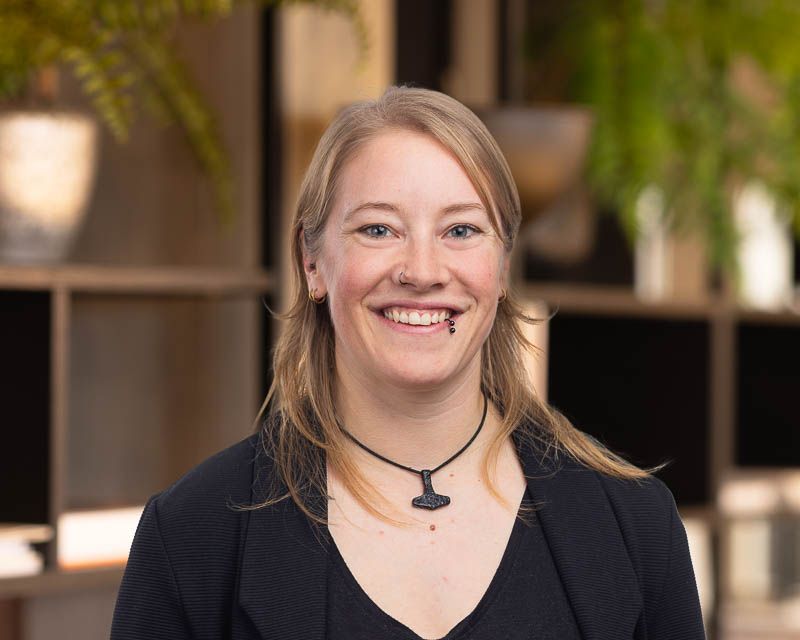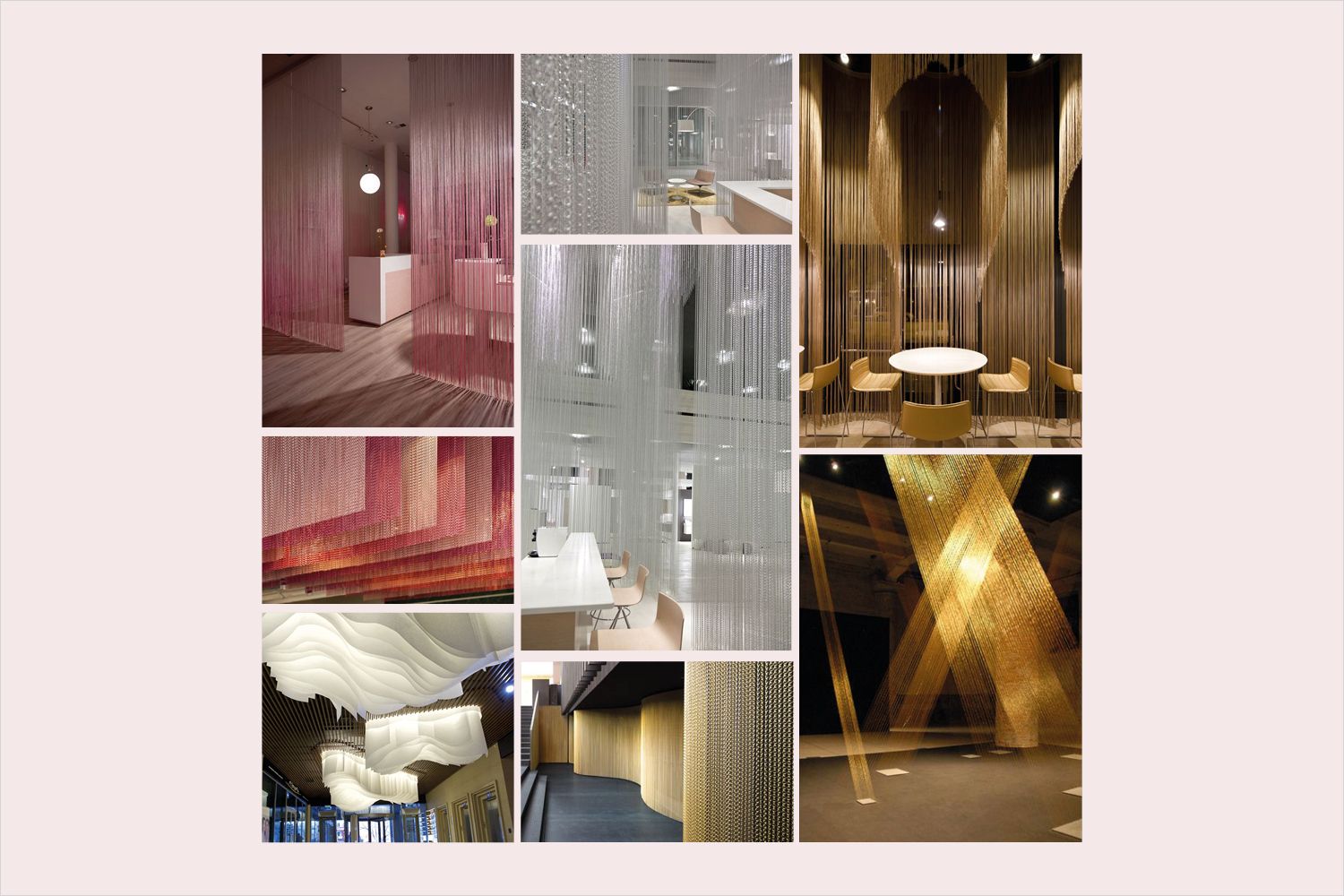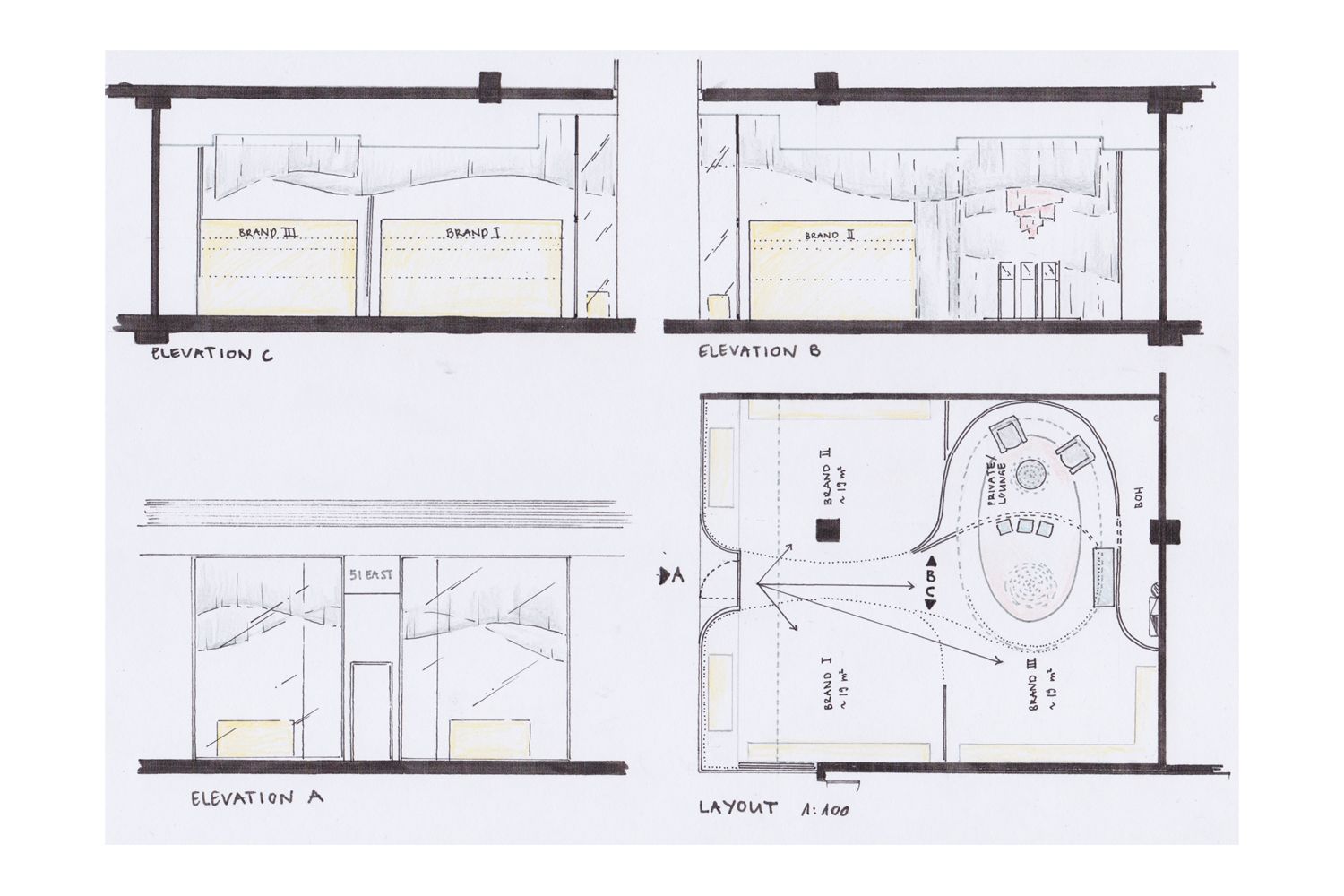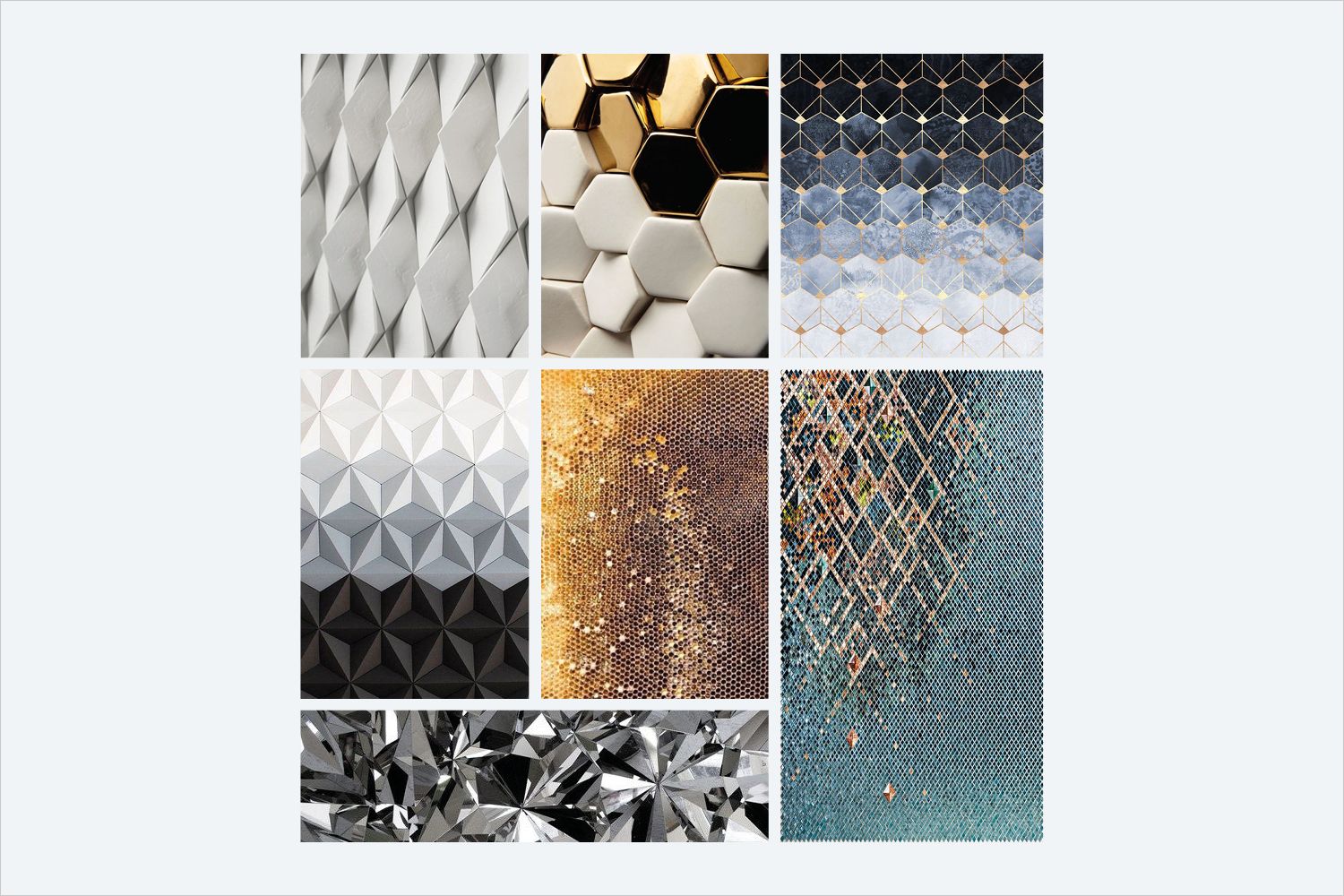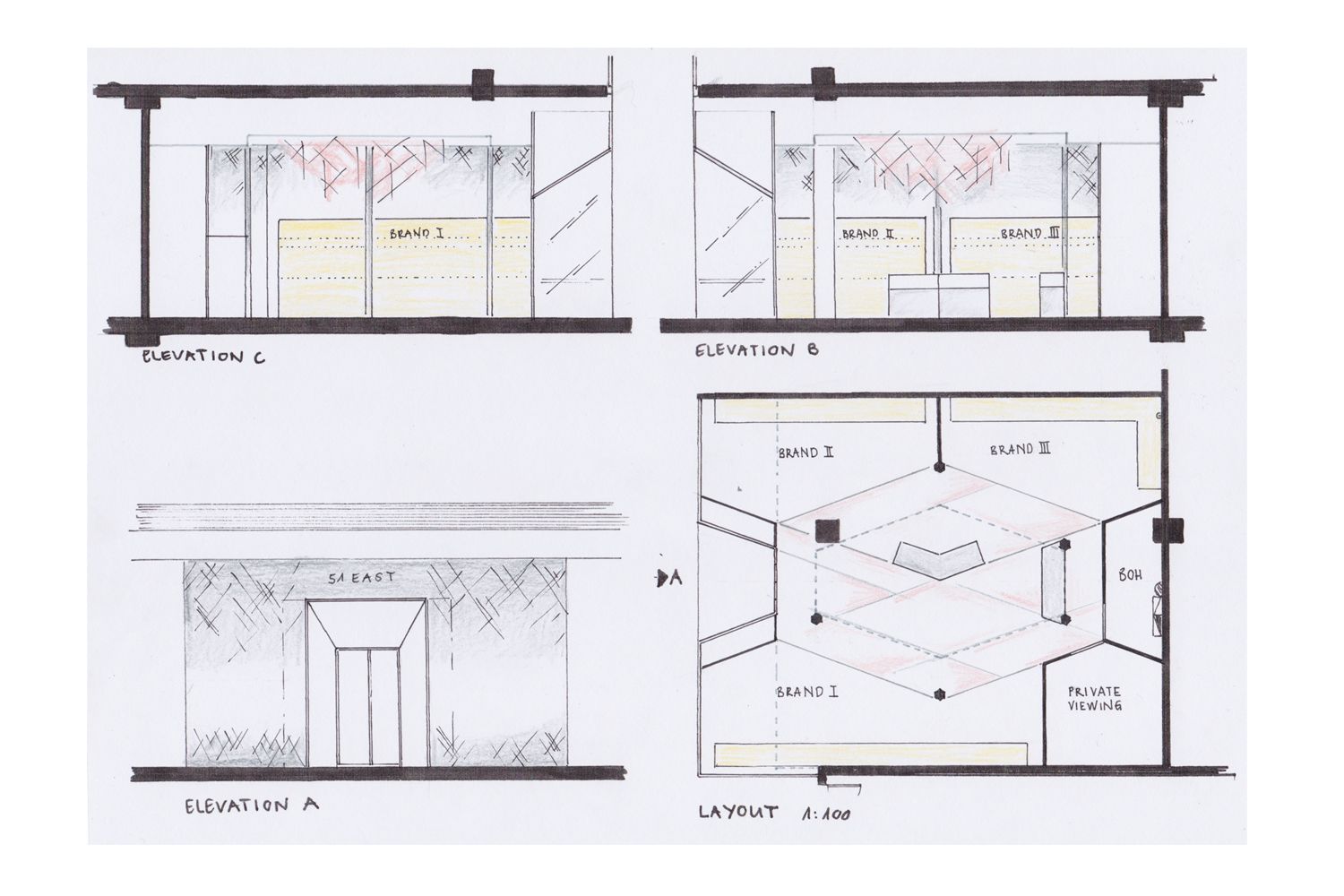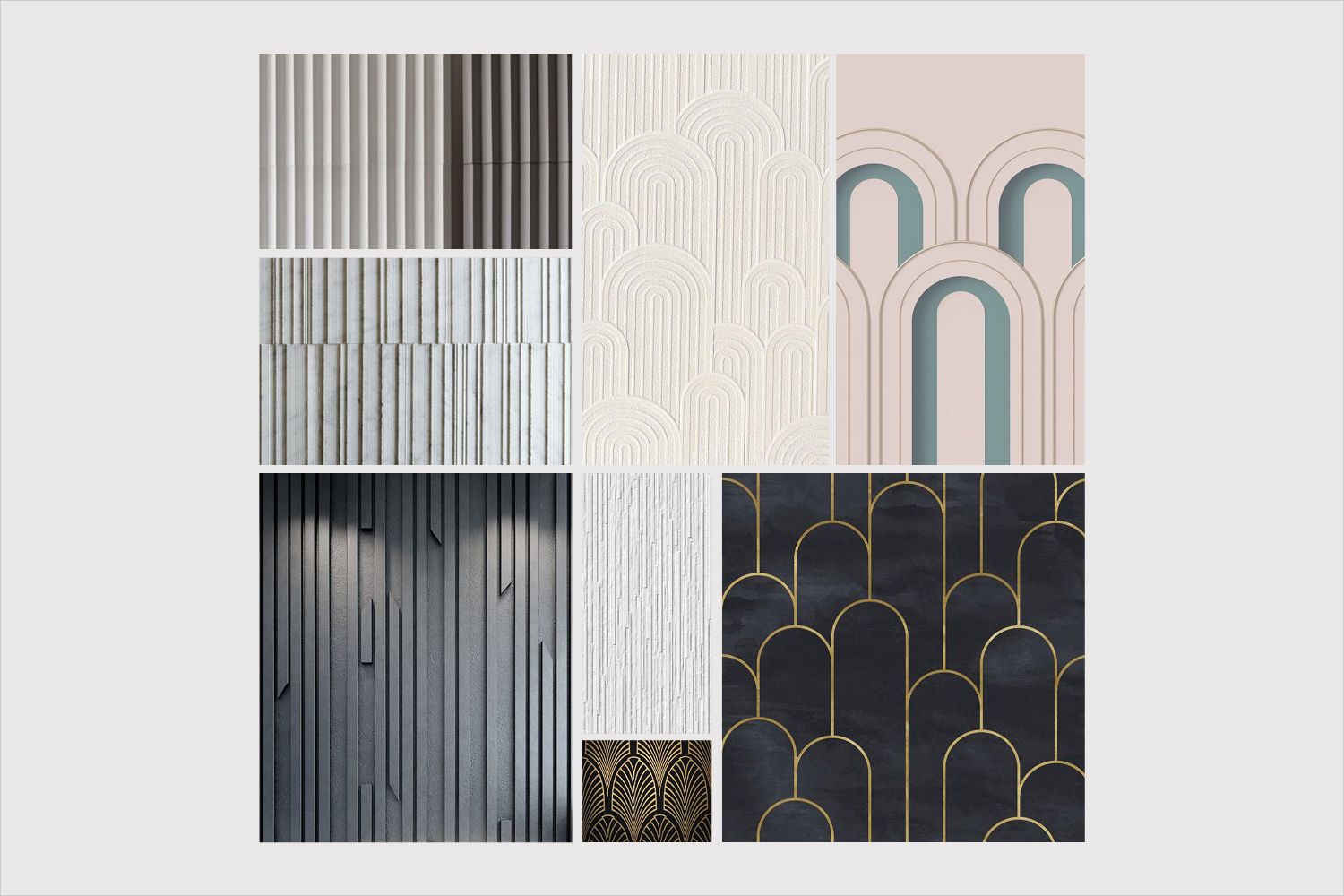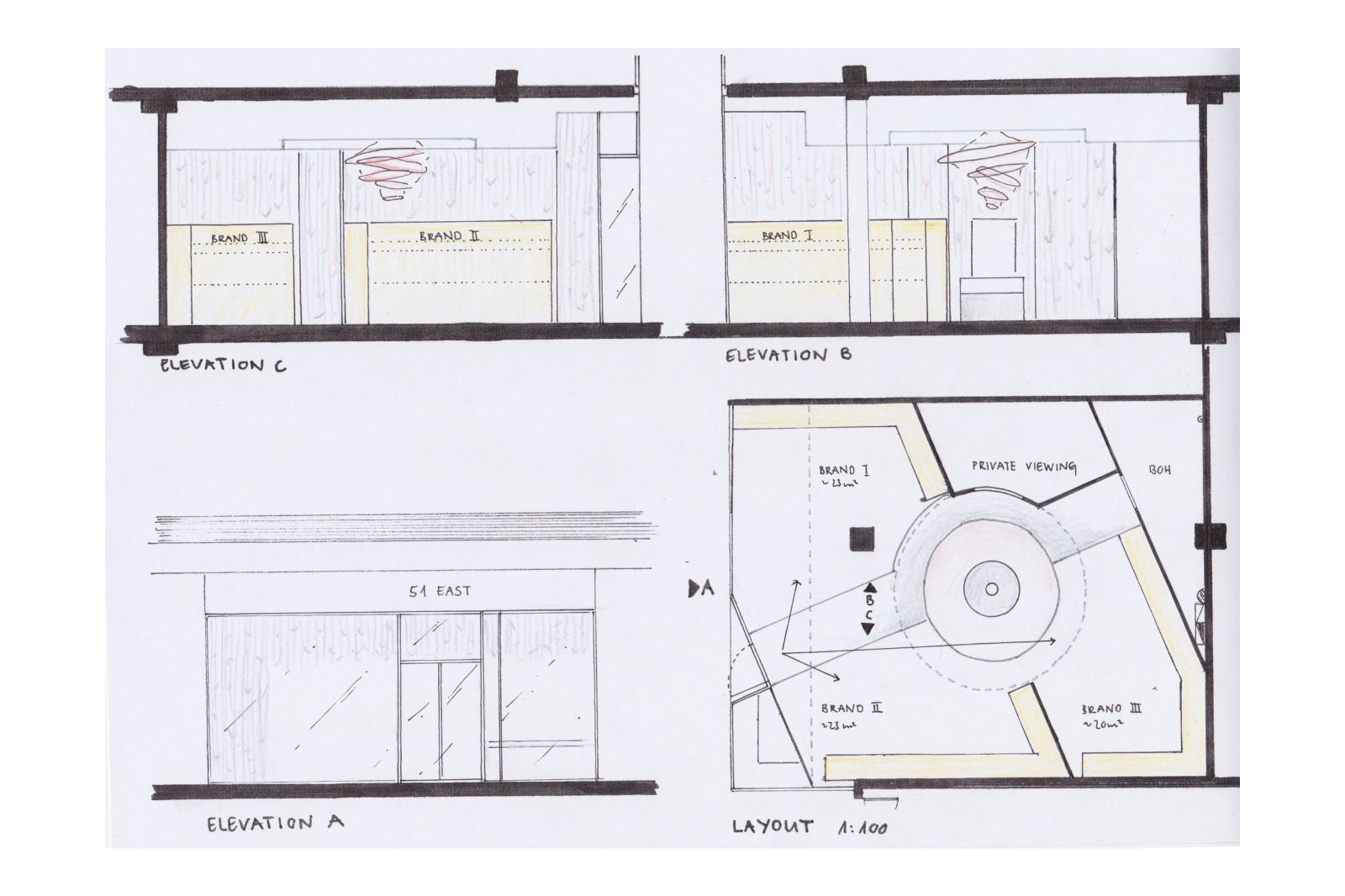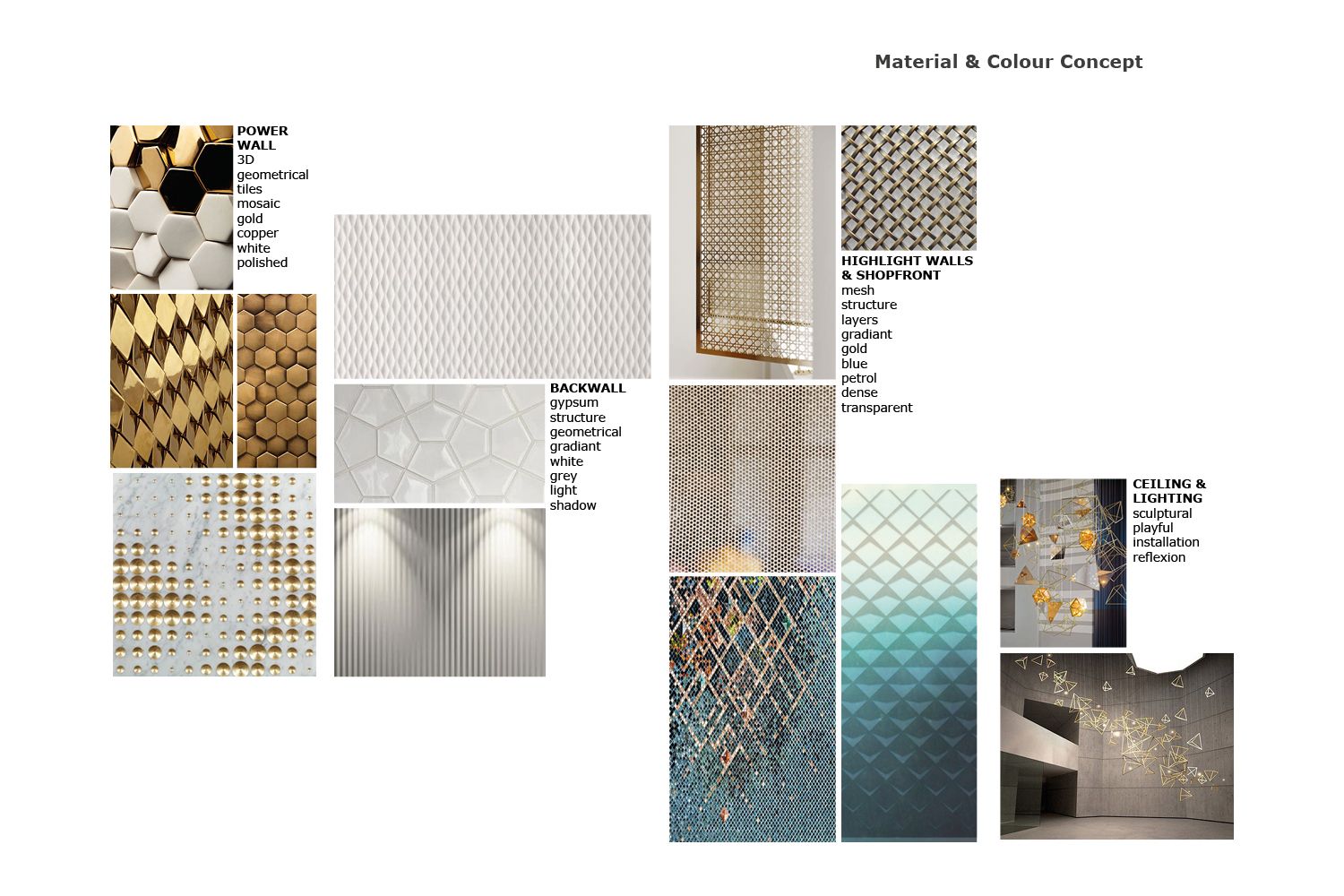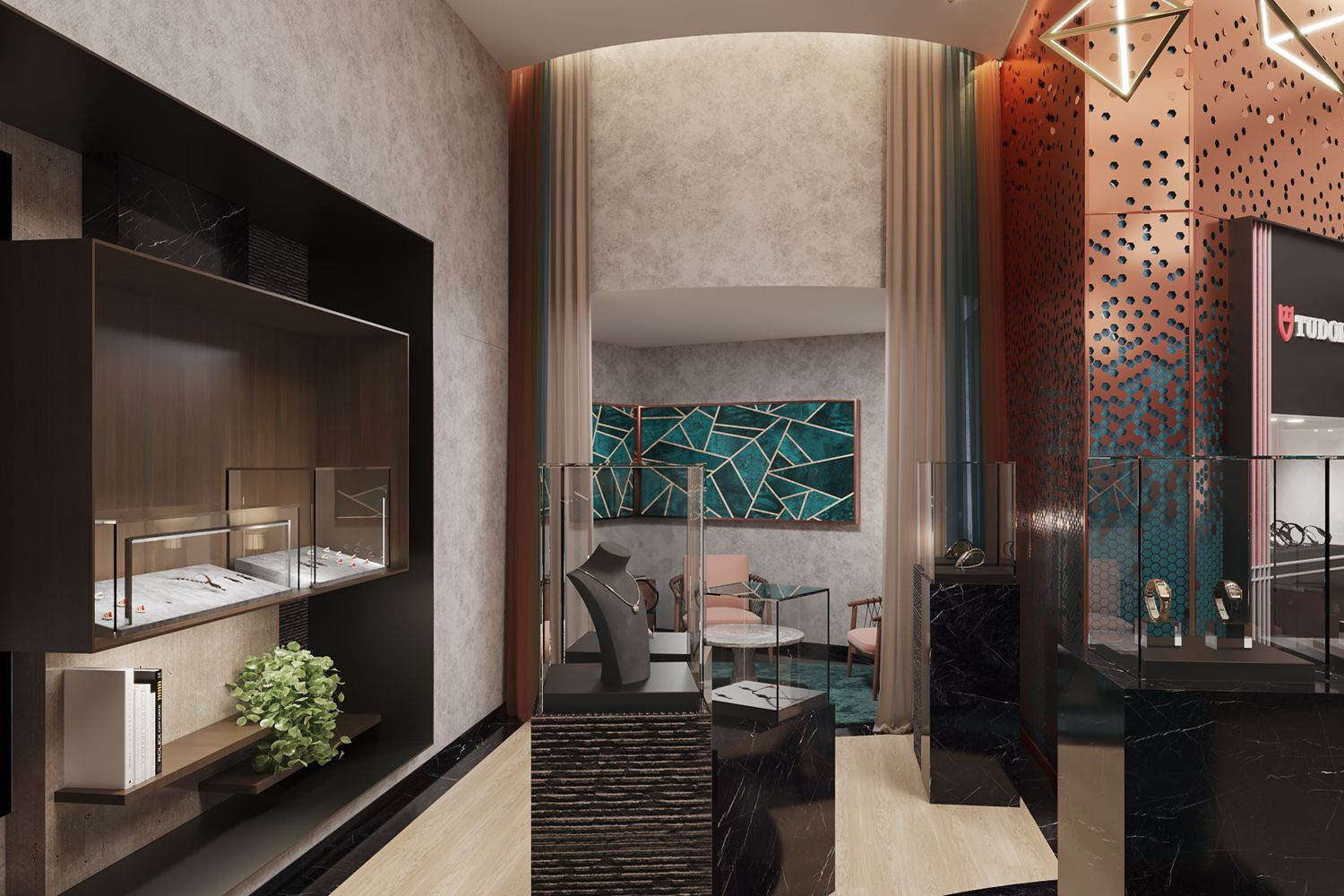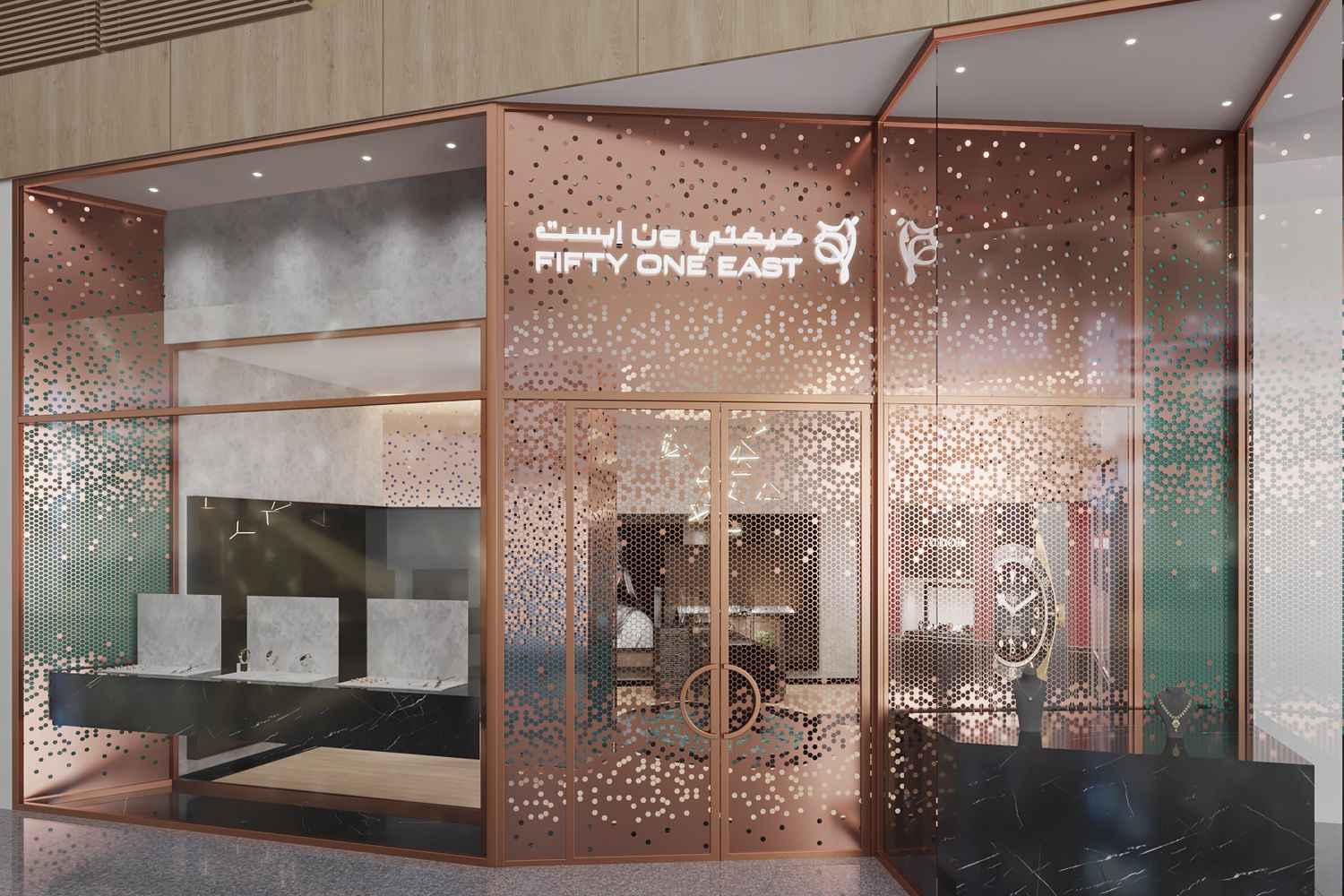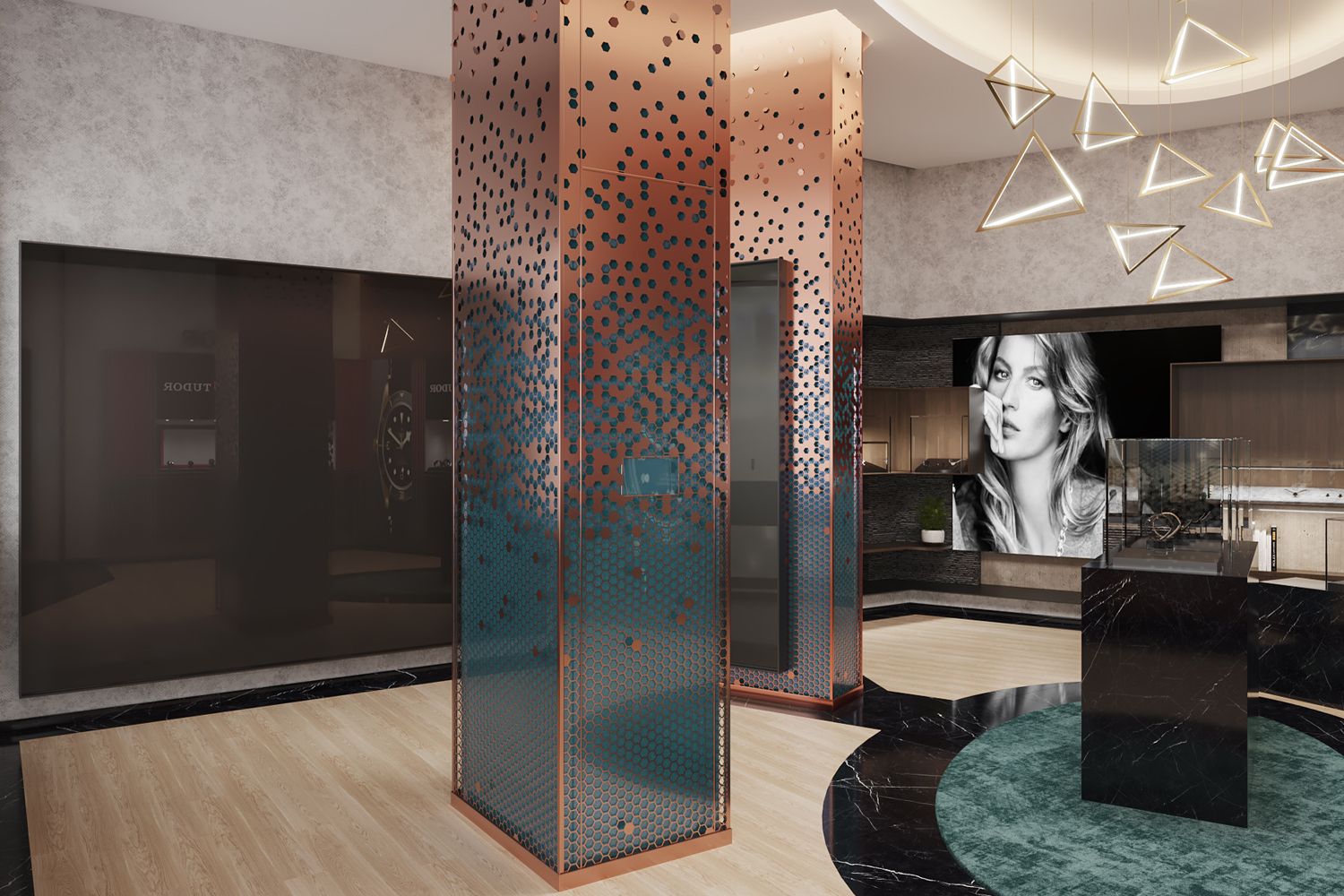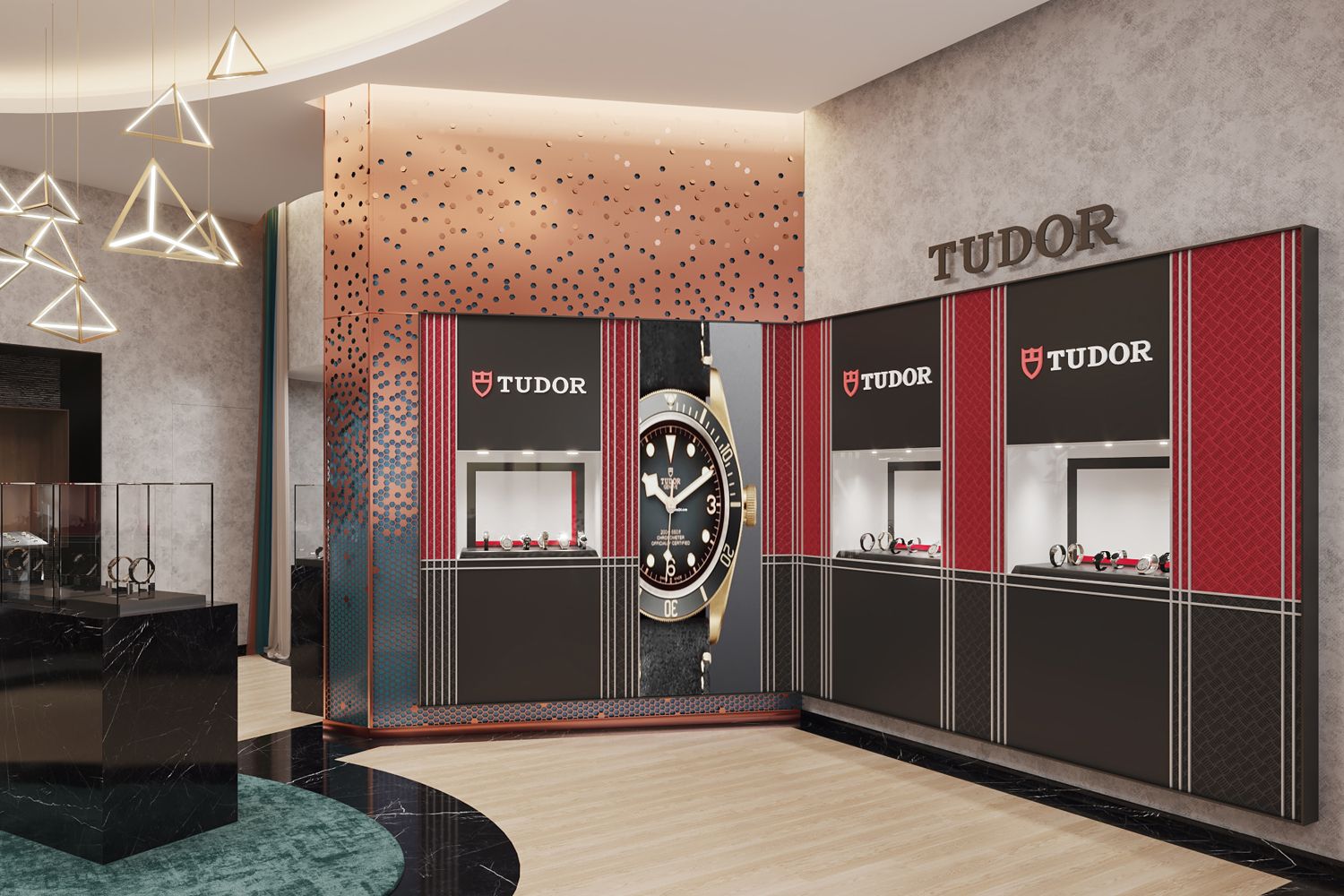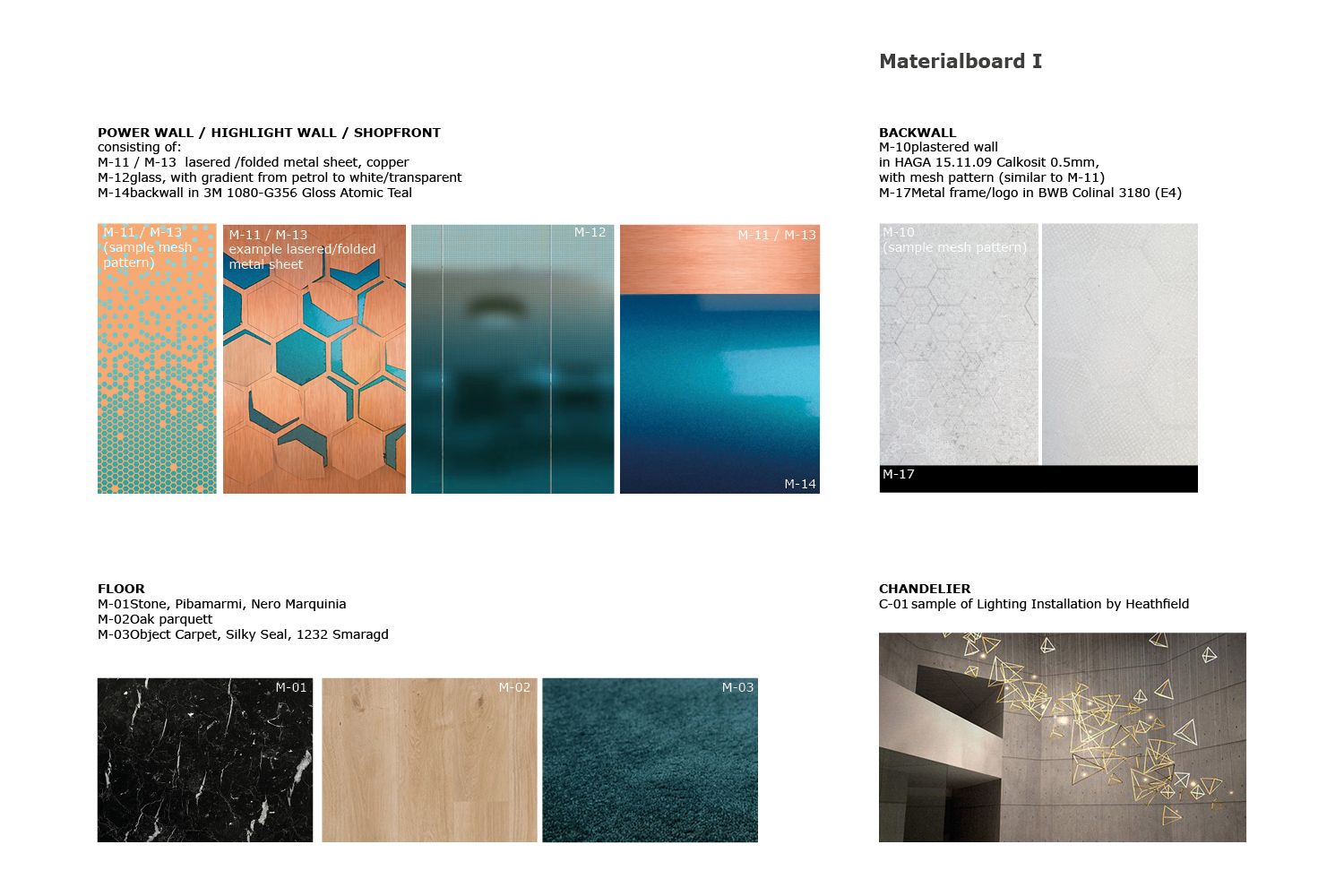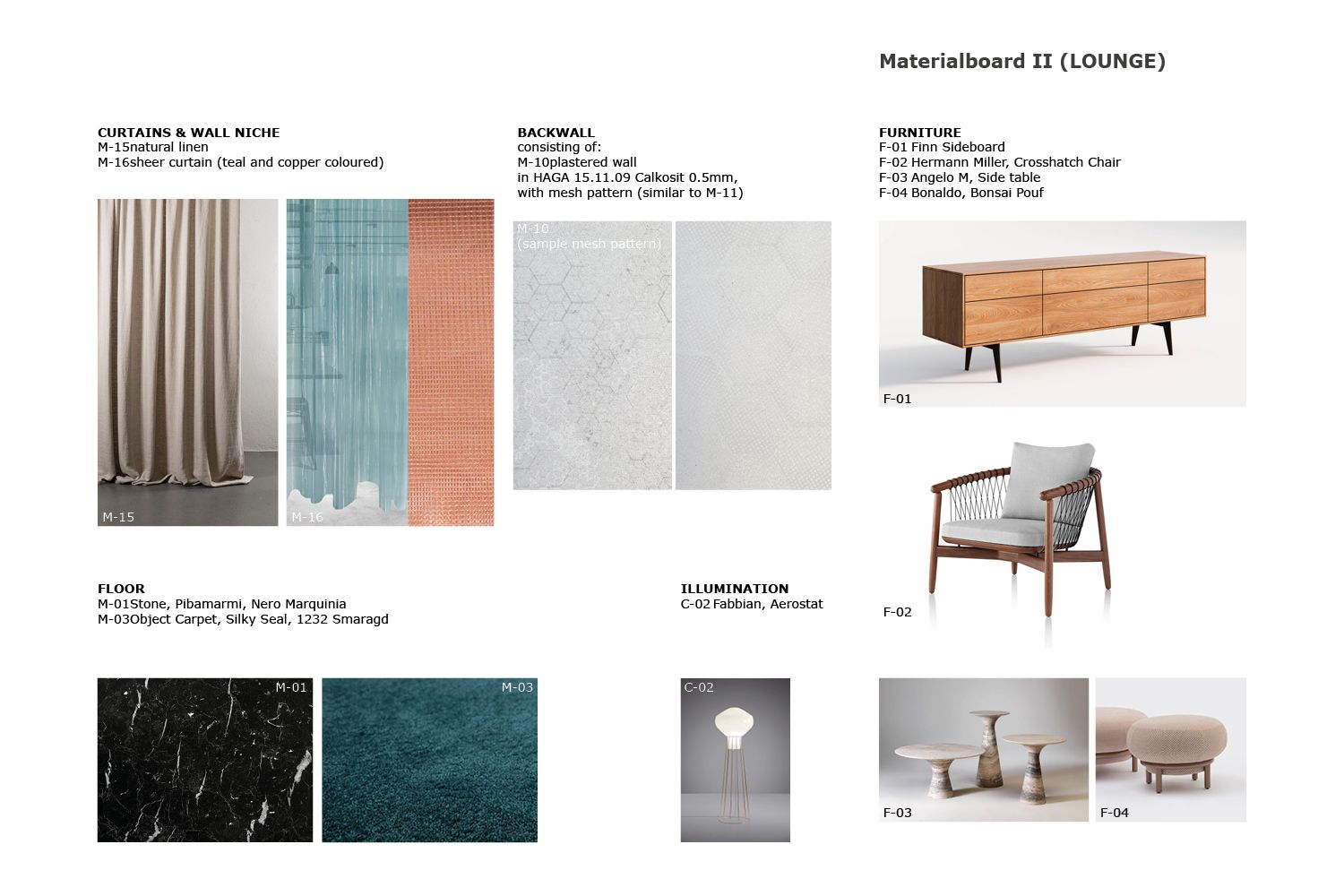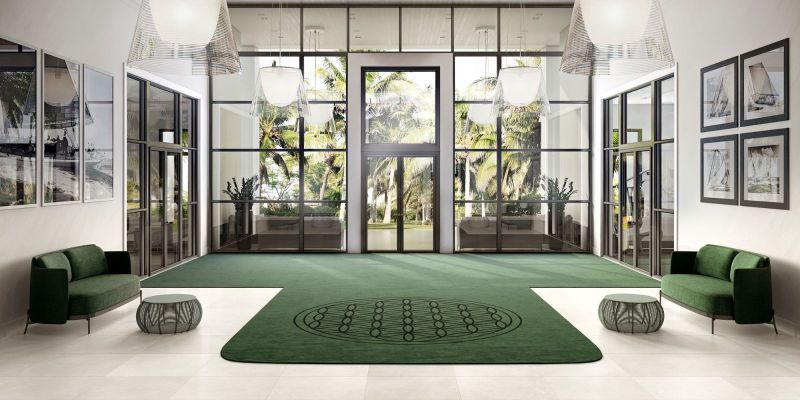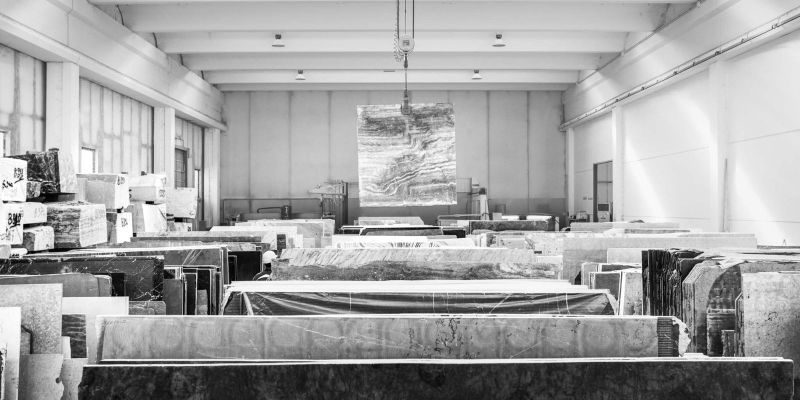31. May 2022
How do we find the right Materials?
We have thousands of materials at our disposal in shop design. Given the plethora of options, how do we find one that’s just right? Interior architect Deborah Muff talks about a recent project to explain the process.
Author
Deborah Muff
When we design a shop, a trade fair stand, a hotel or a restaurant, the design process consists of the following elements:
- Layout: Dividing the space – What goes where?
- Concept: The design’s theme – What direction should we take?
- Mood boards: Conveying the atmosphere – How will the design/space feel?
- Material board: The selection of materials – What materials should we use?
It is hard to pinpoint where the first ideas about materials emerge in this process: it depends on the project and our clients’ needs. Some might want to appeal to a specific target group with a certain object, while others might direct their focus more on work flows and want to include, say, a lounge for exclusive consultations (as we’ll see in our example in a moment). Each requirement has an influence on our design process and, by extension, the materials we choose. Some more than others.
Although the work flow of each project can vary, I want to show what the process of selecting materials can be like by way of a concrete example.
Starting point: Multi-brand boutique
Fifty One East commissioned DOBAS with the shop design and project execution planning for a multi-brand boutique:
- Number of brands: three, each with their own corporate identity and design
- Venue: Doha Festival City Mall
- Surface area: 112 square metres, all on one level
- Specifications: number of brands, separate lounge area
We had already had the privilege of working with Fifty One East on several prior occasions. For one project for the luxury retail provider, we designed a boutique in the Lagoona Mall Doha (read more about it here).
Layouts, concepts and mood boards
In the three layout proposals I designed, I played with different forms, each of which set a clear course for specific materials and shaped the concepts for the multi-brand boutique. Three of the elements mentioned above – layout, concept and mood board – became quickly intertwined in this project, making it difficult to put them in a clear chronological order.
- Concept 1: round, flowing, soft, transparent, light and shadow
- Concept 2: angular, diamond, honeycombs, geometrical, blue, gold and copper
- Concept 3: diagonal, open, linear, fine textures, details
The mood boards of this project were already strongly informed by materials. That is different with every project. Some clients want to see material worlds as soon as possible, others prefer mood boards that convey the atmosphere of the entire space.
I compiled the materials for these mood boards by searching online. I had some initial ideas and directions, but everything was still wide open. The impact of the materials was the main thing at that stage; their suitability and qualities were only considered later on.
Further development and selection of materials
After presenting my three concepts, I developed the final shop design. Our client was especially enthusiastic about the materials and structures of the second concept and the diagonal axis of the third. As a result, these features were blended together in a new proposal.
Some aspects of the project, such as the materials, became more concrete with this step, but we were still in an exploratory phase. Actually, the material and colour concept (see slider below) already had elements that we followed up on and ultimately used, such as the hexagon structure and the colour gradient.
Then, I selected the final materials and created two material boards: one for the retail area and one for the lounge area. A number of factors are important when considering which materials to use: in addition to aesthetics, the price range and safety requirements such as fire protection must also be taken into account.
In order to find the right materials for the multi-brand boutique of Fifty One East, I used three sources:
- The sample library in our office: Where I can browse several hundred materials made by myriad manufacturers.
- Manufacturers: For some materials, I asked manufacturers directly about suitable options.
- Producers: Not every material is «off the rack»; the lattice covering with the laser-cut hexagonal shapes, for instance, was a custom creation for the boutique. I consulted with our trusted metal producer about how to optimally execute this idea.
Once we had selected the materials, we created renderings (see slider above). On the one hand, renderings help us see what the boutique will look like; on the other, they also serve as a control tool, allowing us to simulate different lighting situations and be sure that the combination of materials and colours meets our expectations and requirements.
Additional sources of inspiration
The possibilities for researching materials have grown almost infinitely, in no small part thanks to the internet. There are providers like raumprobe.com or Material ConneXion; platforms like the Swiss Material-Archiv network, in which ten material collections of different institutions joined together to create a digital library; websites like Pinterest and Architonic also provide endless inspiration. The list goes on.
There are, of course, also places in the analogue world where you can go to browse through materials, such as Schweizer Baumuster-Centrale Zürich (Swiss Construction Samples Centre in Zurich). Many higher education institutions also keep material libraries, such as the Lucerne School of Engineering and Architecture. Both examples are also members of the digital Material-Archiv.
Execution of the boutique
After finalising the shop design, I forwarded all the information to my colleagues in the Planning department. They took care of the project execution planning that Fifty One East received and would be carried out with our own partners. In spring 2022, the boutique in the Doha Festival City Mall was completed.

Take your interior architecture project to the next level
Deborah Muff
Interior Architect
Explore More Space Stories
Space Story #36 | 28 September 2023
Despite Worldwide Fame, the Rug Is Still Firmly Under Their Feet
Kramis has been manufacturing exclusive hand-tufted pieces for well-known clients such as Vitra and SAP since 1987. This family-owned business in a tiny Swiss village achieved worldwide fame in 2022 – thanks to the ingenuity of the new generation.
Space Story #33 | 30 January 2023
Ensuring the Best Natural Stone for the Job
Pibamarmi is one of our regular partners for interior architecture projects. The family-run Italian business values innovation and has developed, among other things, a revolutionary treatment for protecting natural stone.

